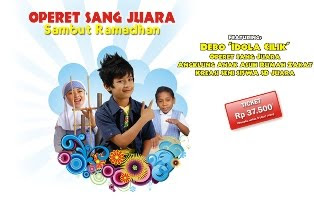My Indonesia
Indonesia, the largest archipelago and the fifth most populous nation in the world, has a total of 17,508 islands, of which about 6,000 are inhabited. Indonesia extends 3,198 miles (5,150km) between the Australian and Asian continental mainland and divides the Pacific and Indian Oceans at the Equator. With a total land area of 767,777 square miles (1,919,443 sq. km), its 190 million inhabitants are made up of 300 ethnic groups who speak an estimated 583 different languages and dialects. There are five main islands in Indonesia. These are: Java, Sumatra, Kalimantan, Sulawesi and Irian Jaya.
Across its many islands, Indonesia consists of distinct ethnic, linguistic, and religious groups. The Javanese are the largest and most politically dominant ethnic group. Indonesia has developed a shared identity defined by a national language, ethnic diversity, religious pluralism within a majority Muslim population, and a history of colonialism and rebellion against it. Indonesia's national motto, "Bhinneka Tunggal Ika" ("Unity in Diversity" literally, "many, yet one"), articulates the diversity that shapes the country. However, sectarian tensions and separatism have led to violent confrontations that have undermined political and economic stability. Despite its large population and densely populated regions, Indonesia has vast areas of wilderness that support the world's second highest level of biodiversity. The country is richly endowed with natural resources, yet poverty is a defining feature of contemporary Indonesia.
Across its many islands, Indonesia consists of distinct ethnic, linguistic, and religious groups. The Javanese are the largest and most politically dominant ethnic group. Indonesia has developed a shared identity defined by a national language, ethnic diversity, religious pluralism within a majority Muslim population, and a history of colonialism and rebellion against it. Indonesia's national motto, "Bhinneka Tunggal Ika" ("Unity in Diversity" literally, "many, yet one"), articulates the diversity that shapes the country. However, sectarian tensions and separatism have led to violent confrontations that have undermined political and economic stability. Despite its large population and densely populated regions, Indonesia has vast areas of wilderness that support the world's second highest level of biodiversity. The country is richly endowed with natural resources, yet poverty is a defining feature of contemporary Indonesia.
Monday, April 6, 2009
CONGKLAK
Minie first played it when Minie was in Elementary School (but forgot the year ^_^). Minie used to played it with Minie's siblings.
You must be curious about this game right?, 'coz from its name, is, little bit weird, don't you think so?
Well, let Minie tell you a story about this unique game, Congklak.

Congklak has its origins in either Africa or the Arab world, depending on which scholar's theory you choose to believe. Some of the oldest evidence was found in National Geographic-sponsored archaeological diggings dating back to 7,000 to 5,000 BC in present-day Jordan. Excavations of a house uncovered a limestone slab with two parallel rows of circular depressions. The layout was easily recognizable to an archaeologist on the dig as the Congklak playing board. Murray, a noted scholar, traced the origins to ancient Egypt's Empire Age (about the 15th to 11th centuries BC). Many experts surmise that Congklak may in fact be the oldest board game ever.
The earliest recorded writings describing the game were found in references to mancala in Arab religious texts dating to the Middle Ages. Some scholars believe that the game originated in the Middle East and spread from there to Africa. Then, the game spread to Asia with Arab traders and came to the Caribbean around 1640 via the African slave trade. Other experts place the origins in Central Africa.
Today, the game is known by numerous names around the world. The names are taken from the local culture using words that reflect where the game is played, the manner of winning, the mode of play and the board or counters used. It is referred to in English as Count and Capture.
In Arab countries, the most common name is mancala (an Arabic word meaning in English "to move"). In some West African countries the depressions in the board are referred to as Warri or Awari, which means houses, thus giving it the name Wari. In Nigeria the game is known as Adi, which is also the name of the seeds used to play the game.
Even within Indonesia, Congklak is known by different names from region to region. The most common name, Congklak, is taken from the cowrie shell, which is commonly used to play the game. In Malaysia, the game is known as congkak, a name that is used in many Sumatran provinces as well. In Java, the game is known as Congklak, dakon, dhakon or dhakonan. In Lampung, the game is called, dentuman lamban. In Sulawesi, the game is referred to as Mokaotan, Maggaleceng, Aggalacang and Nogarata.
Historical references to Congklak refer to the game played by young girls of Javanese nobility. It is most likely that foreign traders, due to their close contact with the upper classes, introduced Congklak to them. With the passage of time, Congkla' s popularity grew until its now widely played by the common people as well. In most regions, Congklak play is limited to young girls, teens and women in their leisure time and its seen as a 'girl's game'. In only a few regions is Congklak played by men and boys as well.
In Sulawesi, historically, the game was reserved for play only during grieving periods, after the death of a loved one. It was considered taboo to play the game at any other time. In Central Java, in pre-historic times, Congklak was used by farmers to calculate the seasons, to know when to plant and harvest, as well as to predict the future.
What do you think, would you like to try to play Congklak ? it's not too difficult to play it.
source : expat.or.id
Labels: Indonesian Traditional Games
0 Comments:
Subscribe to:
Post Comments (Atom)



,+Jakarta.jpg)




Post a Comment